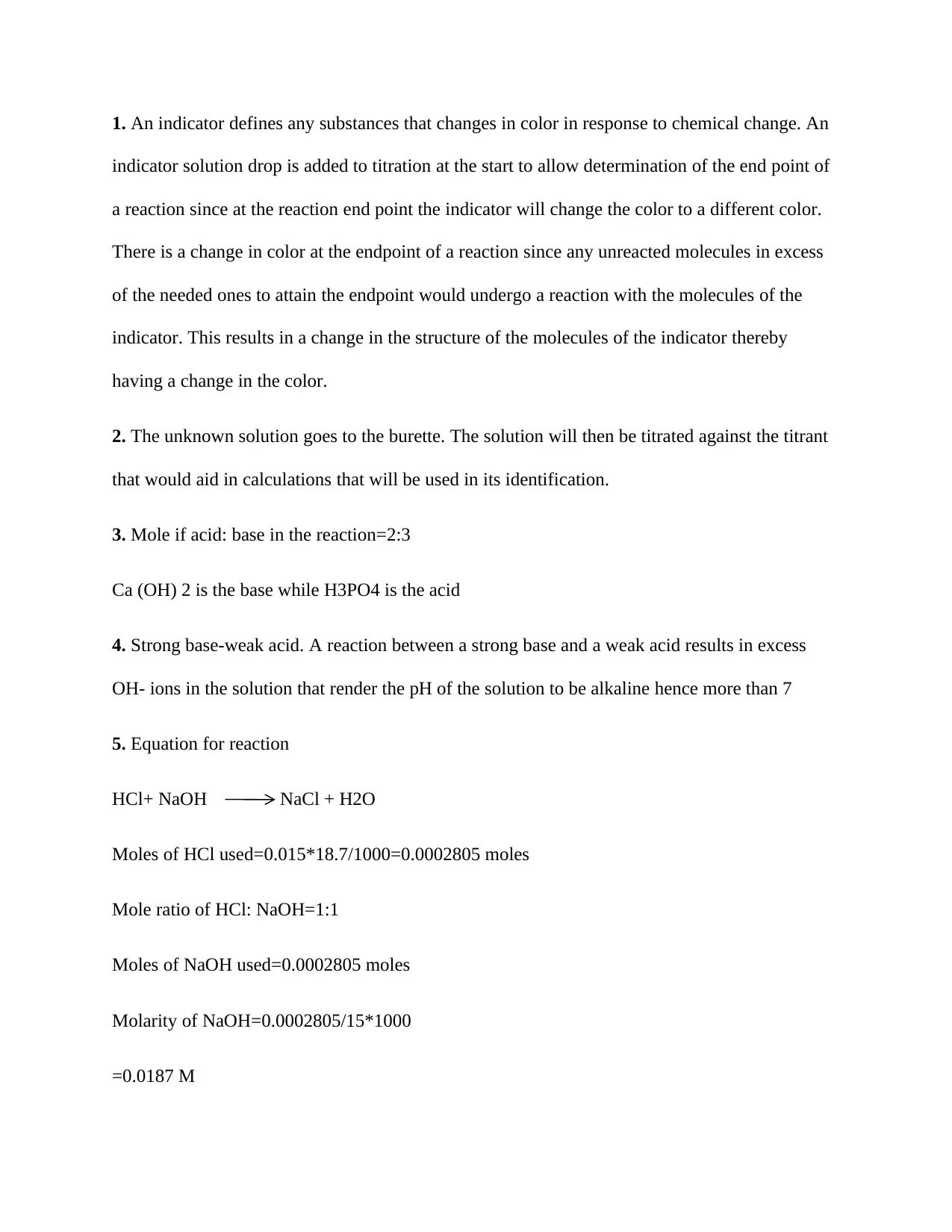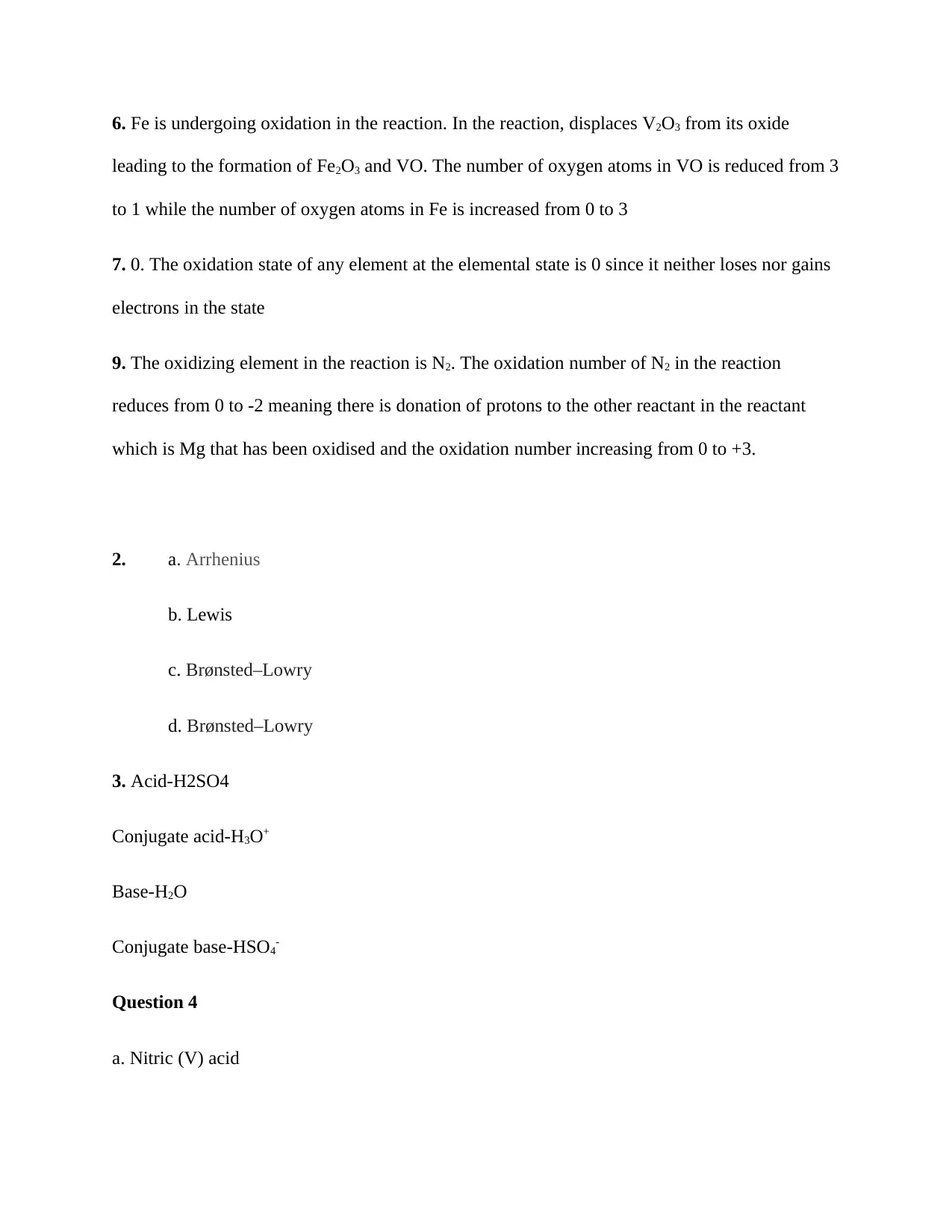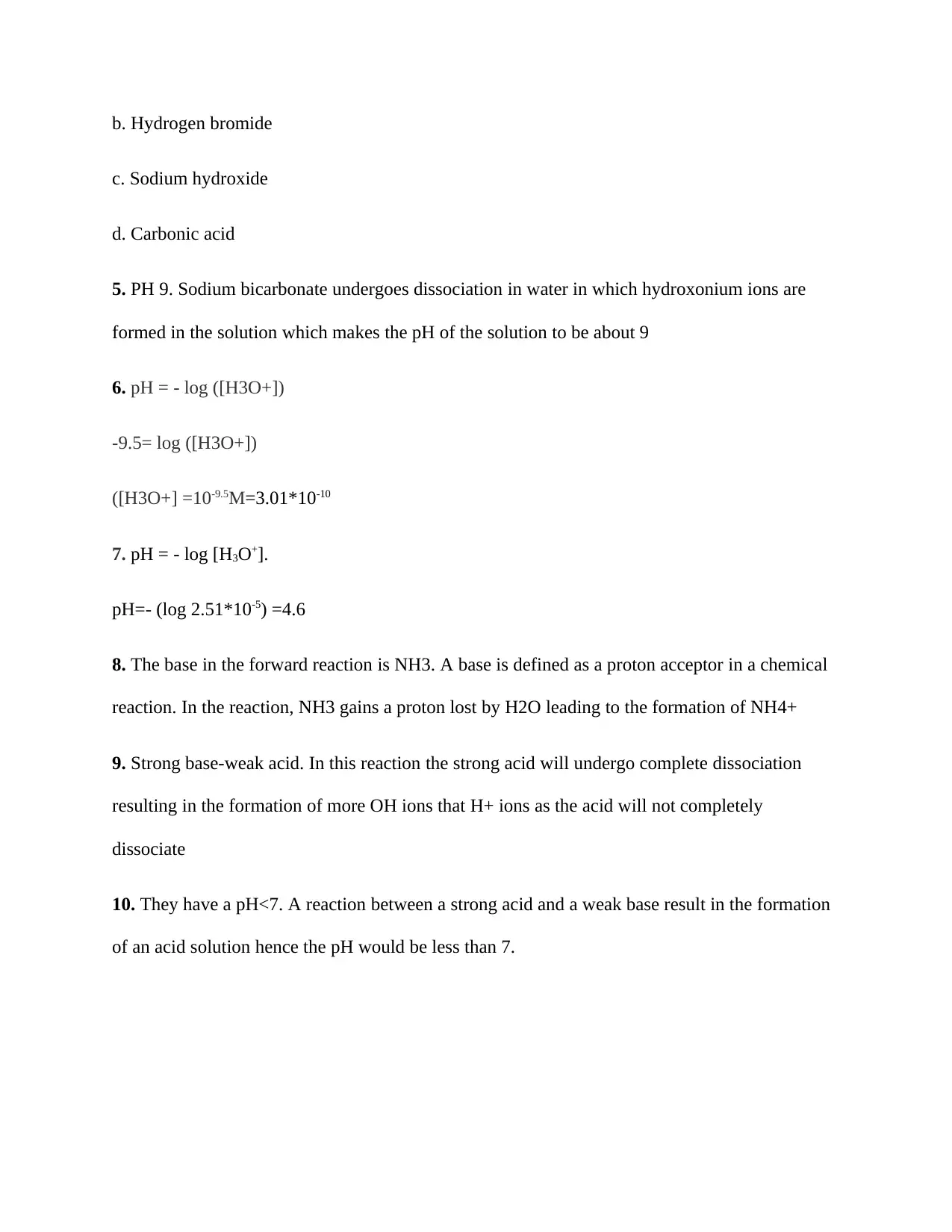Chemistry Homework Solution: Acids, Bases, and Reactions
VerifiedAdded on 2023/01/10
|4
|602
|73
Homework Assignment
AI Summary
This chemistry homework solution addresses various concepts in acid-base chemistry. It begins by explaining indicators and their role in titration, followed by identifying the unknown solution in a burette. The solution then delves into stoichiometry, discussing mole ratios in acid-base reactions and predicting the pH of solutions based on the strength of the acid and base. The document provides detailed calculations, including the molarity of a solution determined through titration. It also covers oxidation-reduction reactions, identifying oxidizing and reducing agents. Furthermore, the solution defines acids and bases according to Arrhenius, Lewis, and Brønsted-Lowry theories. It identifies conjugate acid-base pairs, determines the pH of solutions using calculations, and explains the behavior of strong acids and bases. The assignment concludes with an analysis of acid-base reactions, pH and the behavior of acids and bases.
1 out of 4










![[object Object]](/_next/static/media/star-bottom.7253800d.svg)